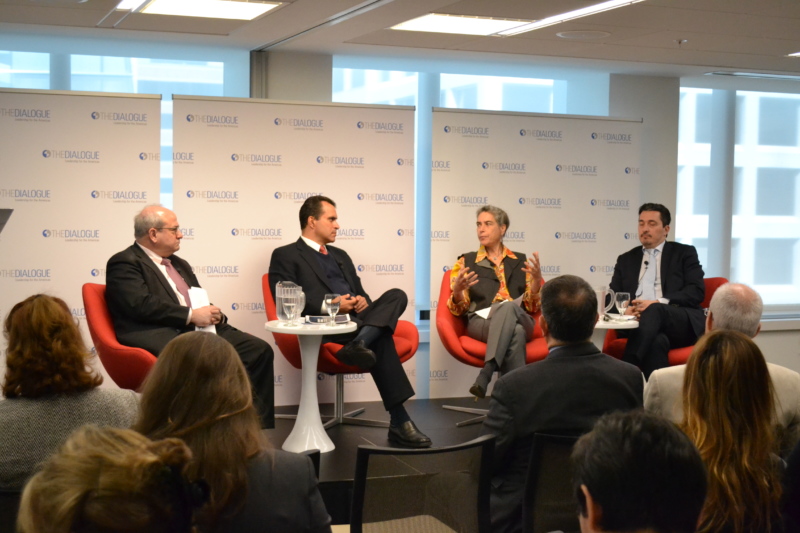Corruption in Latin America: What’s New? What’s Next?
 Irene Estefanía González / Inter-American Dialogue
Irene Estefanía González / Inter-American Dialogue
On May 9th, 2017, the Inter-American Dialogue hosted an event with Kevin Casas-Zamora, Non-Resident Senior Fellow for the Inter-American Dialogue, Sarah Chayes, Senior Fellow in the Democracy and Rule of Law Program at the Carnegie Endowment for International Peace, and Carlos Santiso, head of the Innovation for Citizen Services Division at the Inter-American Development Bank. Throughout the event, the speakers discussed the recent wave of corruption scandals in Latin America.
Casas-Zamora opened the event by presenting the findings of his latest report (with Miguel Carter), Beyond the Scandals: The Changing Context of Corruption in Latin America. Recently, the region has seen unprecedented social and institutional reactions against corruption. There is a misconception that this wave started because there is more corruption. On the contrary, the region has done a remarkable, although unacknowledged, effort to introduce institutions, standards, and norms that increase transparency and accountability levels.
When it comes to corruption, a lot has happened recently in Latin America. Many of the countries have seen high levels of grand corruption. What is really new is the fact that private executives and politicians at the highest levels are being prosecuted, most notably the Lava Jato probe in Brazil. The Odebrecht scandal, which grew out of Lava Jato, has had similar ramifications on a regional scale. In Guatemala, a sitting president was forced to resign to be prosecuted. Outpourings of public anger over corruption have emerged in Chile, Mexico, and Honduras.
The available evidence does not signal an increase in corruption, nor in corruption perception. Instead, the rapid change is in opinions about corruption, in part as a result of the development of a new normative edifice to fight corruption and increase transparency. In other words, this new response to corruption comes from a change in the context in which corruption is taking place. Casas-Zamora explained some of the factors he thinks have encouraged this change. First, there is an increase in public transparency thanks to an increase in availability of information. Transparency, however, in the short run generates an increased succession of scandals. Second, changes in the patterns of access to information through social media influence how those scandals are disseminated, lowering he costs for collective action. Finally, the recent economic downturn experienced in the region is an immediate trigger for this wave, since individuals are more punitive towards corruption under bad economic times.
Casas-Zamora concluded by presenting the policy recommendations from the report. He suggests persistence on the normative and institutional transformations. There is also need for better information on grand corruption. Additionally, he suggests developing eco-systems of protection of integrity in the public sector. Moreover, he recommends investing in democratizing access to ICT’s and adopting pro-equity policies.
Sarah Chayes continued by suggesting that there might be a qualitative change in the way corruption functions as an operating system of networks facilitated by globalization. There are integrated networks that go across public, private, and criminal sectors, becoming transnational kleptocratic networks. She underscored the connections and similarities between these corrupt governments and transnational organized crime. She also recommends paying attention to the institutional structures that enable corruption, as punishing individuals is not sufficient.
Carlos Santiso continued highlighting the fact that this wave signals distrust with the government and among the citizens. He argued that this leads to things not getting worse, but that they are not getting better either. Fortunately, corruption is less tolerated today, which makes it more likely to be exposed and prosecuted. Moreover, governments have been more responsive. The challenges are improving the quality of the institutions and finding ways to transform the increased social response into proposals and structural reforms. Finally, he highlighted how transparency demands are being applied to international financial markets.
The event concluded with a question and answer section during which the speakers discussed clientelism, law enforcement, cultural corruption, and how women’s participation correlates with control of corruption.



















